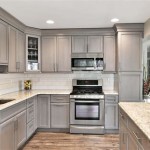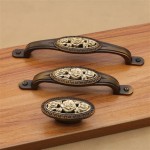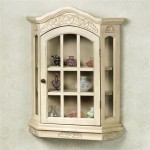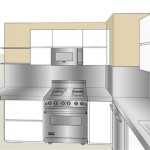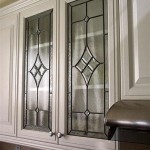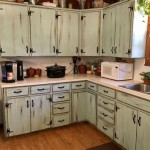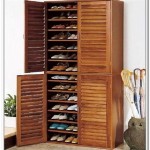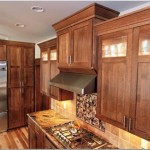How to Add Pull-Out Drawers in Kitchen Cabinets
Adding pull-out drawers to existing kitchen cabinets is a popular renovation project that significantly increases accessibility and organization. These drawers, also known as roll-out shelves, transform standard base cabinets from dark, cluttered spaces into user-friendly storage solutions. This article provides a comprehensive guide on how to install pull-out drawers in your kitchen cabinets.
Before embarking on the project, careful planning and accurate measurements are crucial. This involves assessing the cabinet's internal dimensions, selecting appropriate drawer sizes, and choosing the right materials and hardware. Rushing this phase can lead to ill-fitting drawers, wasted materials, and significant frustration during installation.
Assessing Your Kitchen Cabinets
The initial step involves thoroughly examining the existing cabinet structure. This assessment identifies any obstructions, such as pipes, wiring, or support frames, that may interfere with drawer placement. Identifying these obstacles early on allows for necessary modifications or adjustments to the planned drawer dimensions.
Begin by emptying the cabinet completely. Use a measuring tape to determine the internal width, depth, and height of the cabinet opening. Measure at multiple points as cabinets may not be perfectly square. Subtract the thickness of the drawer slides (usually ½ inch per side) from the internal width to determine the maximum allowable drawer width. Similarly, consider the available height inside the cabinet when planning the number of pull-out drawers you intend to install.
Pay close attention to the cabinet door hinges and any protruding hardware. Ensure that the drawers will clear these obstructions when closed. If necessary, consider using spacers or shims to create the required clearance. For cabinets with face frames, the drawer slides will typically be mounted to the frame. For frameless cabinets, the slides will attach directly to the cabinet's interior walls.
Inspect the condition of the cabinet materials. Ensure the cabinet walls are sturdy enough to support the weight of the drawers and their contents. If the cabinet walls are weak or damaged, reinforcement may be required before proceeding with the installation.
Selecting the Right Materials and Hardware
Choosing the appropriate materials and hardware is essential for the longevity and functionality of the pull-out drawers. The drawer boxes themselves are typically constructed from plywood, solid wood, or melamine. The choice often depends on budget and desired aesthetic.
Plywood offers a balance of strength, stability, and cost-effectiveness. It is less susceptible to warping than solid wood and provides a smooth surface for finishing. Solid wood, such as maple or birch, offers a more premium appearance and can be stained or painted to match existing cabinetry. Melamine is a cost-effective option that is durable and easy to clean, but it offers less aesthetic appeal than wood.
Drawer slides are available in various types, including side-mount, under-mount, and center-mount. Side-mount slides are the most common and affordable option. They are typically mounted to the sides of the drawer box and the cabinet walls. Under-mount slides offer a cleaner look, as they are concealed beneath the drawer box. Center-mount slides are less common and typically used for smaller drawers.
Consider the load capacity of the drawer slides. Choose slides that can support the weight of the items you intend to store in the drawers. For heavy-duty applications, such as storing pots and pans, opt for slides with a higher weight capacity.
Additional hardware, such as screws, wood glue, and finish, will also be required. Use high-quality screws that are appropriate for the chosen materials. Wood glue is essential for assembling the drawer boxes. Select a finish that complements the existing cabinetry and provides protection against moisture and wear.
Constructing and Installing the Pull-Out Drawers
With the measurements taken and materials selected, the next step is to construct the drawer boxes. Accuracy in cutting and assembly is crucial for ensuring a proper fit and smooth operation.
Begin by cutting the drawer box components to the required dimensions. Use a table saw or circular saw for accurate cuts. Ensure that the sides, front, and back of the drawer box are square and of consistent dimensions. For added strength, consider using a joinery method such as dovetail joints or rabbet joints. Alternatively, simple butt joints with screws and glue will suffice for most applications.
Assemble the drawer box using wood glue and screws. Apply glue to all mating surfaces before screwing the components together. Use clamps to hold the drawer box in place while the glue dries. Ensure that the drawer box is square during assembly. A carpenter's square can be used to verify the accuracy of the corners.
Once the drawer box is assembled, install the drawer slides. Follow the manufacturer's instructions for proper installation. Typically, the drawer slides are mounted to the sides of the drawer box and the cabinet walls. Ensure that the slides are aligned properly and securely fastened. Use a level to ensure that the slides are mounted horizontally.
Before installing the drawer boxes into the cabinets, consider applying a finish to the drawer box. This could involve painting, staining, or applying a clear coat. Allow the finish to dry completely before proceeding with the installation.
Finally, install the drawer boxes into the cabinets. Slide the drawers into the mounted drawer slides. Ensure that the drawers slide smoothly and that they close completely. If necessary, adjust the drawer slides to achieve optimal performance. Some slides may offer adjustments to account for minor imperfections in the cabinet or drawer box.
Repeat these steps for each pull-out drawer you intend to install. Take your time and pay attention to detail. The result will be a significant improvement in the functionality and organization of your kitchen cabinets.
Adding pull-out drawers to your kitchen cabinets is a project that can be tackled by homeowners with basic carpentry skills. By carefully planning, selecting the right materials, and following these instructions, anyone can transform their cabinets into more efficient and organized storage spaces.
Regular maintenance of the pull-out drawers will ensure their longevity and smooth operation. This includes periodically cleaning the drawer slides and tightening any loose screws. With proper care, pull-out drawers can provide years of convenient and accessible storage.

How To Convert Cabinet Shelves Into Pull Out Drawers

How To Easily Add Drawers Kitchen Cabinets Small Stuff Counts

Making Smart Use Of Kitchen Cabinet Pull Out Storage

How To Install Drawer Pullouts In Kitchen Cabinets Ers

Diy Pull Out Cabinet Drawers Love Renovations

Diy Pull Out Cabinet Drawers Love Renovations

How To Make Simple Easy Sliding Shelves

How To Easily Add Drawers Kitchen Cabinets Small Stuff Counts

Kitchen Cabinets Pull Out Storage Solutions Of The Desert

How To Make Pull Out Shelves For Kitchen Cabinets Ron Hazelton
Related Posts

